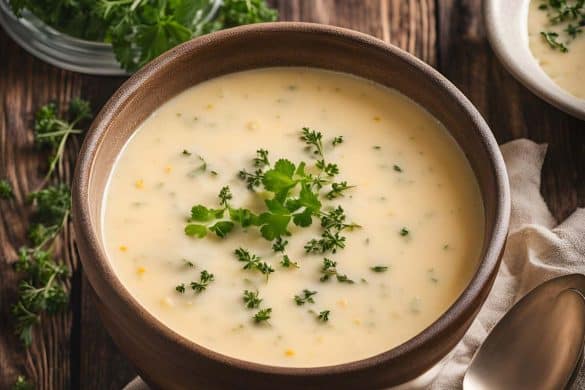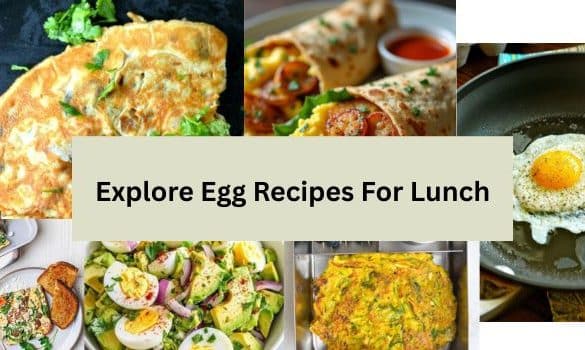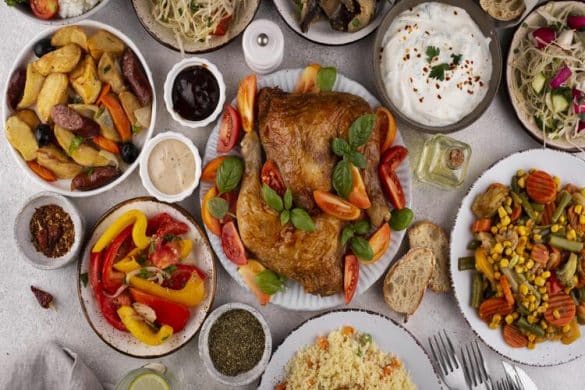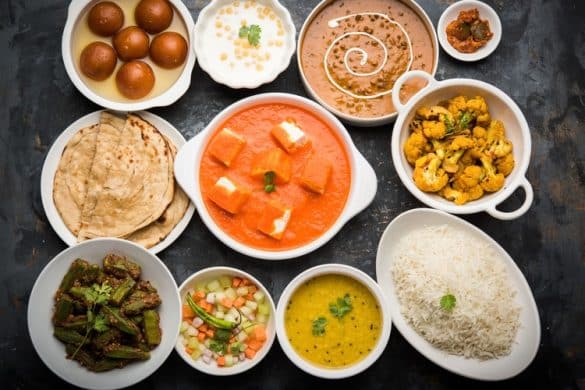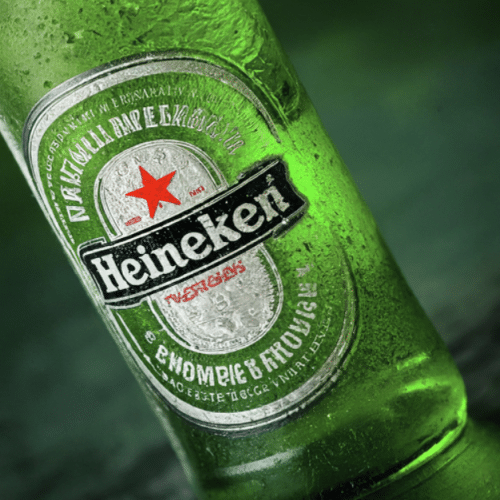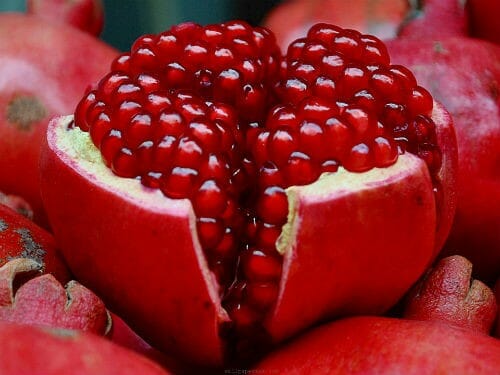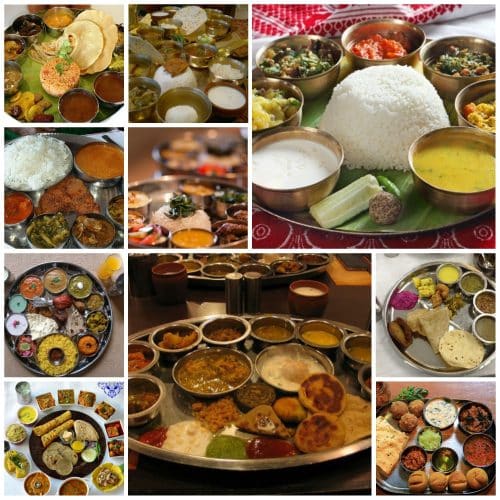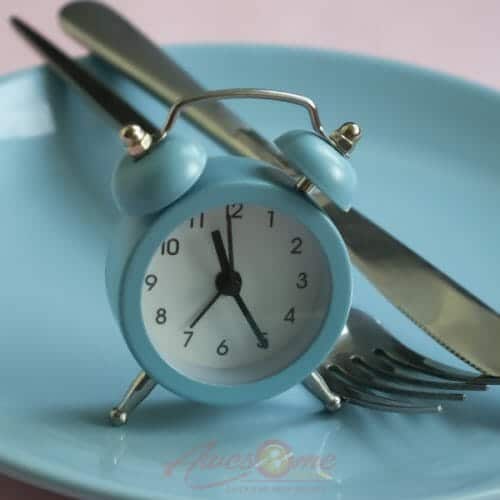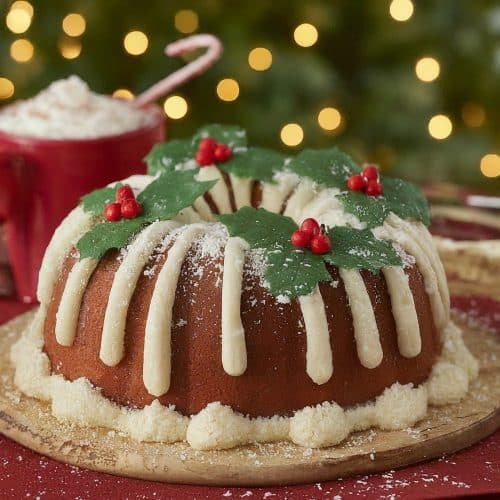Chinese New Year is a time of joyous celebrations, with family and friends coming together to usher in the new year. Food is essential in these festivities as it symbolizes prosperity and good luck. In this post, we’re sharing some traditional recipes that you can try out to bring a touch of authenticity to your Chinese New Year celebrations.
From the classic longevity noodles and rice cake with mixed vegetables to the more adventurous lion’s head casserole and homemade Chinese steamed buns – there’s something for everyone! We’ve also included some street food delights like Jian Bing and Orange Chicken so that you can experience the flavours of China right in your kitchen. Join us as we celebrate Chinese New Year with these delicious recipes!
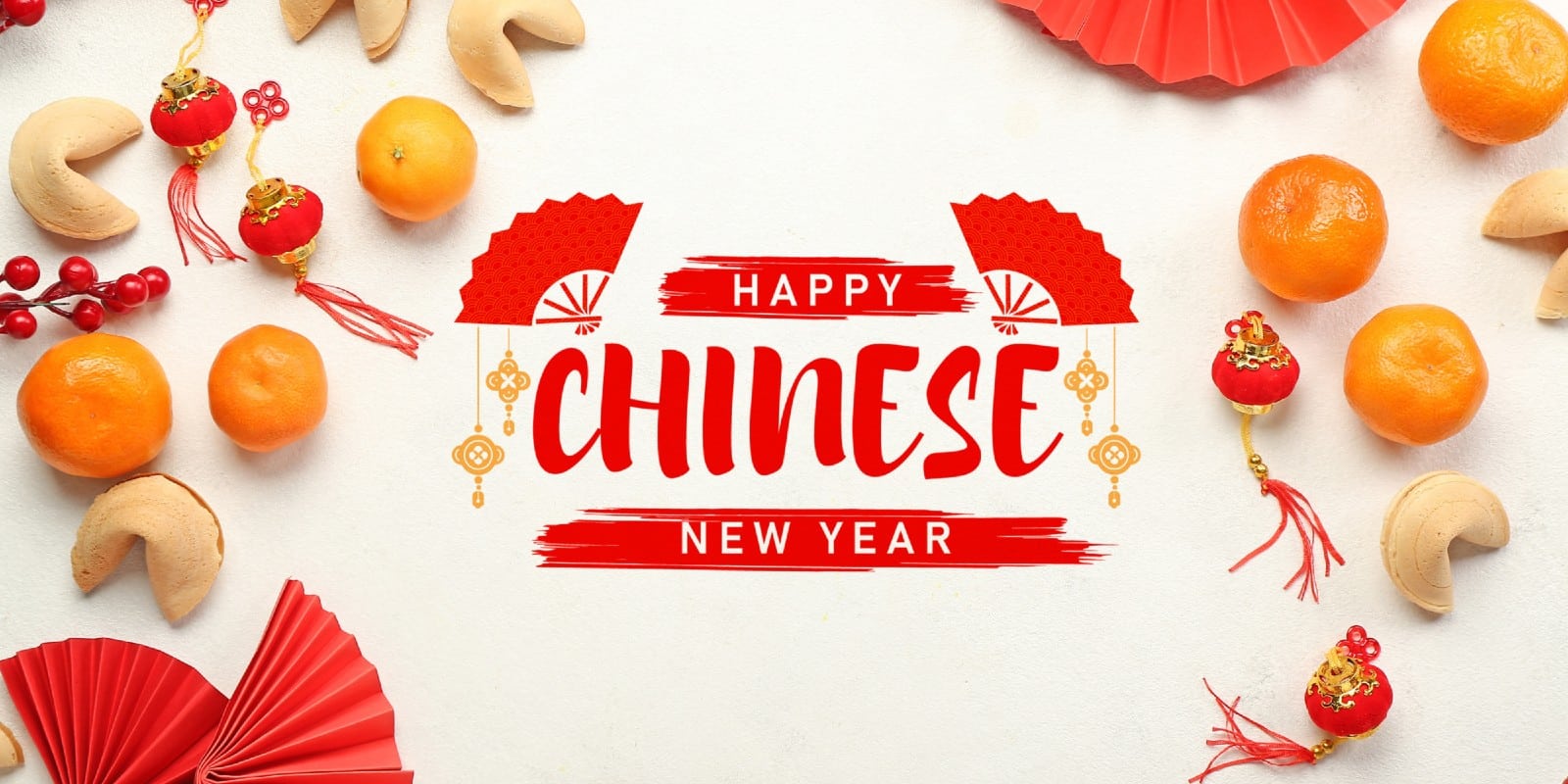
Happy Chinese New Year
Celebrating Chinese New Year with Traditional Recipes
Traditional Chinese New Year recipes capture the spirit of the Spring Festival by symbolizing luck and good fortune. These dishes are crucial in celebrating the festival, showcasing cultural heritage and highlighting family unity and prosperity.
Authentic Chinese New Year recipes incorporate ingredients with symbolic significance, emphasizing the festival’s traditions and values. Each dish, whether pork meatballs or lion’s head meatballs, holds deep meaning, contributing to the traditional atmosphere of the festivities.
The Importance of Food in Chinese New Year Celebrations
In Chinese New Year celebrations, food embodies the values of luck, prosperity, and longevity. It plays a central role, signifying abundance and good fortune while symbolizing hope for a prosperous and harmonious year. Meticulously prepared dishes honour tradition and cultural significance, deeply rooted in the festival’s customs and beliefs. Chinese New Year feasts reflect the festival’s rich heritage, emphasizing family unity and prosperity, steeped in tradition and featuring ingredients with auspicious symbolism.
How to Choose the Perfect Recipe for the Occasion
When selecting Chinese New Year recipes, consider the traditional symbolism of ingredients, prioritizing dishes with auspicious meanings and cultural significance. Reflect the festival’s traditional values through chosen recipes, aiming to bring the family good luck, fortune, and happiness. Emphasize dishes holding symbolic importance, resonating with the festival’s essence. Each recipe should embody the festival’s spirit and cultural heritage, ensuring a meaningful and prosperous celebration.
Longevity Noodles
Longevity noodles are:
- A cherished Chinese New Year staple.
- Symbolising longevity and good health.
- Representing blessings for a prosperous life.
Traditionally served uncut, these noodles hold deep symbolic meaning, signifying hopes for happiness and good fortune in the coming year. With their auspicious symbolism, longevity noodles embody the cultural significance of the Spring Festival, offering a traditional culinary experience rich in symbolic value.
What Makes Longevity Noodles Special?
Longevity noodles are deeply cherished during the Chinese New Year. These noodles symbolize longevity and good fortune, as they are believed to bring blessings of a long and prosperous life. Enjoyed with the aspiration for good health and longevity, noodles hold significant cultural importance in Chinese New Year celebrations.
Step-by-Step Guide to Preparing Longevity Noodles
Mix the longevity noodles to perfect texture, symbolizing a long life. These noodles are traditionally served in a flavorful, savoury broth to enhance auspiciousness. When cooking the longevity noodles for Chinese New Year, it’s essential to incorporate traditional Chinese cooking techniques for an authentic taste. The noodles are deliberately served long, signifying the wish for a long and prosperous life while symbolizing hope for longevity and good fortune.
Rice Cake with Mixed Vegetables
Rice cake with mixed vegetables, a traditional Chinese New Year dish, symbolizes progress, growth, and prosperity. Its symbolic significance embodies abundance and harmony, representing the hope for a prosperous new year. This cherished recipe is essential during the Spring Festival, signifying bountiful and prosperous times ahead. The rice cake with mixed vegetables reflects the deep-rooted cultural beliefs and aspirations for a year filled with good fortune and success.
The Symbolism of Rice Cake during Chinese New Year
Symbolizing progress, prosperity, and good fortune, Chinese New Year rice cake carries deep symbolic meaning. The wish for a flourishing and prosperous year ahead is embodied in this traditional dish. Mixed vegetables in the rice cake represent the hope for advancement and growth, making it an essential part of the New Year celebrations. As families gather to celebrate the Spring Festival, the symbolism of rice cake underscores the collective aspiration for a bountiful and promising year.
Simple Recipe to Prepare Rice Cake with Mixed Vegetables
Infusing traditional Chinese methods, prepare rice cake with mixed vegetables for Chinese New Year, intertwining auspicious symbolism and flavour. With special attention to customs and meanings, cook the rice cake to reflect the festival’s cultural significance. Honour the traditional customs and values by perfectly cooking the rice cake, echoing the festival’s profound cultural importance.
Pork and Chive Dumplings
Chinese New Year pork and chive dumplings carry profound meaning, symbolising wealth, good fortune, and unity. This traditional dish represents family togetherness and prosperity, embodying the hope for good fortune and harmony during the festivities. Beloved for their promise of good luck, prosperity, and happiness, these dumplings unite families in joyful celebration. As a symbol of the coming together of family for joyous festivities, pork and chive dumplings hold a special place in Chinese New Year traditions.
Celebrating with Pork and Chive Dumplings: Why it Matters
Pork and chive dumplings signify wealth and good luck, traditionally made for Chinese New Year. Enjoyed for the new year, they represent good fortune and family reunion. The circular shape symbolizes harmony, as eating dumplings during the festival signifies a smooth year ahead. These dumplings hold deep cultural significance, embodying hopes for prosperity and togetherness.
Easy-to-Follow Recipe for Pork and Chive Dumplings
Incorporating NLP terms such as “pork dumplings,” “dim sum,” and “Chinese dumplings” is essential for SEO optimization. Preparing the filling with ground pork, chives, and traditional seasonings is integral to making pork and chive dumplings. Another crucial step involves creating the dumpling wrappers using a simple mixture of flour and water. The various methods of cooking dumplings, including boiling, steaming, or pan-frying, offer versatility in serving this traditional dish during the Chinese New Year festivities.
Lion’s Head Casserole
Lion’s Head Casserole, a traditional Chinese New Year dish, symbolizes good fortune and family unity with its meatballs resembling a lion’s head. This popular dish represents strength, courage, and a prosperous year ahead, making it a significant part of family gatherings during the festival. The casserole is deeply rooted in Chinese culture, embodying the essence of the Spring Festival and the cherished values of togetherness and prosperity.
The Story Behind the Lion’s Head Casserole
Originating in the Huaiyang cuisine of eastern China, the lion’s head casserole features large meatballs symbolizing a lion’s head, epitomizing good fortune and longevity. A traditional Chinese New Year feast favourite, the dish comprises meatballs cooked with napa cabbage, mushrooms, and a traditional sauce, believed to bring good luck. This culinary delight encapsulates the essence of Chinese New Year traditions, representing prosperity and togetherness during the spring festival celebrations.
How to Prepare a Delicious Lion’s Head Casserole
Prepare a delectable lion’s head casserole by combining ground pork, water chestnuts, and traditional spices to form meatballs. Slow-cook the meatballs with napa cabbage and shiitake mushrooms, seasoning the dish with soy sauce, ginger, and other traditional flavours. This dish, often served as the centrepiece for the New Year’s feast, symbolizes good fortune, prosperity, and family unity, embodying the spirit of the Chinese New Year celebration.
Sticky Rice Balls
Sticky rice balls, or tangyuan, symbolize family unity and togetherness and are a cherished Chinese New Year dessert. The round shape represents the reunion of family members and is believed to bring good luck and happiness when consumed. Traditionally enjoyed during the Lantern Festival, these sweet rice balls hold cultural significance in Chinese festivities. Including NLP terms like dim sum, lo mein, sesame sauce, and year of the rabbit enhances the traditional and symbolic value of this festive treat.
The Role of Sticky Rice Balls in Chinese New Year
During the Chinese New Year, sticky rice balls play a significant role in the festivities. These sweet treats are usually filled with either black sesame or sweet bean paste and then cooked in a delightful, gingery syrup for extra flavour. Families come together to make and savour these rice balls, symbolizing the wish for a harmonious and sweet life ahead. Eating tangyuan marks the conclusion of the Chinese New Year celebrations, making it a tradition rich in meaning and flavour.
Steps to Make Perfect Sticky Rice Balls
To create perfect sticky rice balls:
- Start by blending glutinous rice flour with water to form the dough.
- Shape the dough into small balls and fill them with your favourite sweet filling.
- Boil the rice balls until they float, indicating they are fully cooked.
- Serve the dessert in warm, sweet ginger syrup.
This traditional Chinese New Year dessert symbolizes family unity and is a cherished part of the celebrations. Making and sharing these rice balls is a meaningful tradition passed down through generations.
Whole Black Bass with Ginger and Scallions
Whole black bass with ginger and scallions holds deep symbolism during Chinese New Year, representing abundance, prosperity, and good luck for the year ahead. The tradition of serving whole fish signifies a promising start to the new year’s feast, as the fish’s head and tail symbolize the beginning and end of the year. This dish embodies the wish for a prosperous year from start to finish, making it an essential part of the Chinese New Year celebrations.
Why Whole Black Bass is a Must on Chinese New Year
Serving a whole fish during Chinese New Year conveys wishes for abundance and prosperity. The fish’s pronunciation in Chinese resembles the words for “surplus” or “remaining,” symbolizing the hope for leftover abundance. Leaving some fish uneaten signifies the aspiration for surplus in the coming year. This dish holds significant meaning, representing the family’s hope for good fortune while reinforcing togetherness as they gather around the table to enjoy the whole fish together.
A Simple Recipe for Whole Black Bass with Ginger and Scallions
Symbolizing unity and prosperity, whole black bass is a traditional Chinese New Year dish. Blending the flavours of ginger and scallions signifies good fortune and luck, echoing the spirit of the celebration. Typically served whole to symbolize a good start and finish to the year, this dish is delicious and laden with auspicious meaning. Ginger and scallions, believed to bring good health and fortune in the coming year, make this a significant dish for the festive occasion.
Spinach and Egg Dumplings
Symbolizing prosperity and new beginnings, Spinach and egg dumplings are a must-have during Chinese New Year. These dumplings blend the health benefits of Spinach with protein-packed eggs, embodying longevity and good fortune. Easy to prepare, they make a nutritious addition to the festive feast, celebrating the Spring Festival’s symbolism and traditional flavours. Embrace the spirit of the Year of the Rabbit with this classic dim sum dish, representing wealth and auspicious beginnings.
The Nutritional Benefits of Spinach and Egg Dumplings
Rich in iron, Spinach symbolizes strength and good fortune in Chinese culture. Eggs, associated with fertility, signify new beginnings. Together in dumplings, they represent hope for a healthy year, offering a balance of vital nutrients and reflecting the desire for well-being. Embrace the traditions of Chinese New Year while enjoying the nutritious benefits of spinach and egg dumplings.
Quick and Easy Recipe for Spinach and Egg Dumplings
Simplify your Chinese New Year prep with this effortless spinach and egg dumplings recipe. Spend more time celebrating and less time cooking with this stress-free preparation. Embrace the joy of the festival with convenient and delicious traditional dumplings that offer flavour and symbolism. Celebrate the tastes and traditions of the festival with this easy-to-follow recipe, ensuring a timely and joyful Chinese New Year celebration.
Sweet & sour prawns
Uncover the cultural roots of sweet and sour prawns and their role in Chinese New Year festivities, exploring their history and cultural significance in Chinese cuisine. Delve into the tradition of Chinese New Year by discovering the symbolic importance of this iconic dish, steeped in heritage. Explore the unique blend of flavours that make sweet and sour prawns a cherished part of the celebrations, delving into the ingredients and preparation methods without repeating any information or reintroducing the context.
History and cultural significance of this dish in Chinese cuisine
During Chinese New Year, families gather to enjoy symbolic dishes believed to bring luck and prosperity. Traditional favourites like dumplings signify wealth, while fish represent abundance. Sticky rice cake, or nian gao, symbolizes success in the coming year. These dishes carry deep cultural significance and are essential to the festivities, bringing together generations in shared celebration. These traditional Chinese New Year dishes’ rich symbolism and cultural importance make them a cherished festival aspect.
Ingredients and preparation for sweet and sour prawns
To prepare sweet and sour prawns, begin with fresh, peeled, and deveined ones. Create a batter using cornflour and water to coat the prawns before frying. Mix tomato ketchup, rice vinegar, pineapple juice, sugar, soy sauce, and cornstarch for the sauce. After frying the coated prawns until golden brown, set them aside. In a separate pan, sauté onions, peppers, and pineapple chunks before adding the sauce and cooked prawns. Stir-fry until the sauce thickens and coats the prawns and vegetables.
Pineapple fried rice
Perfecting the balance of sweet and savoury, pineapple fried rice is an ideal addition to any Chinese New Year feast. This popular dish features a delightful combination of rice, pineapple, shrimp, egg and a medley of vegetables such as carrots, peas, and onions. Whether spiced with chilli flakes or enjoyed in its milder form, this crowd-pleaser can be tailored to suit your preferred heat level. Serve this aromatic delight to celebrate the spring festival with family and friends.
Traditional ingredients in pineapple fried rice
Pineapple fried rice typically includes rice, pineapple, shrimp, egg, and vegetables like carrots, peas, and onions. The combination of sweet and savoury flavours makes it a crowd-pleaser. Adjust the level of heat by adding chilli flakes or hot sauce. Serve this dish as a festive Chinese New Year feast for family and friends.
Tips for making the perfect pineapple fried rice at home
For the best texture and flavour, use cold, day-old rice. Achieve a balance of sweet, sour, and salty flavours with pineapple, soy sauce, and a touch of sugar. Customize with chicken, shrimp, or tofu. Garnish with fresh cilantro, green onions, and a squeeze of lime for a burst of zesty flavour. Add crushed red pepper flakes or a drizzle of sriracha for an extra kick. Enhance the dish with NLP terms like “dim sum,” “pork meatballs,” and “spring festival.”
Cashew Chicken
A beloved Chinese-American classic, cashew chicken offers a delightful fusion of textures and flavours. Originating in Springfield, Missouri, in the 1960s, this dish features boneless chicken, crunchy cashew nuts, and a savoury sauce. Enjoy it with steamed rice or noodles for a satisfying meal, and consider adding water chestnuts, bell peppers, and snap peas for extra colour and nutrition. Cashew chicken is a versatile dish that always impresses.
The history and significance of cashew chicken in Chinese cuisine
Cashew chicken, a fusion of Chinese and American cooking styles, was innovated by David Leong, a Chinese immigrant and restaurant owner. This dish exemplifies the adaptability of Chinese cuisine to local tastes, reflecting the influence of Chinese culinary traditions in the West. Symbolizing cultural exchange, cashew chicken seamlessly blends traditional Chinese flavours with the preferences of American diners. Its historical significance lies in its representation of culinary diversity and the merging of cultural traditions.
Ingredients and preparation for cashew chicken
For cashew chicken, traditional ingredients include diced chicken, cashew nuts, soy sauce, oyster sauce, and sesame oil. The chicken is marinated and stir-fried until golden, then combined with the sauce and cashew nuts. Adjust the spiciness by varying the chilli paste or dried red chillies used in the dish. Customize it to your preference for a delightful meal.
Chow mein
Chow mein, a beloved Chinese stir-fried noodle dish, combines noodles, vegetables, and protein in a satisfying medley. The term “mein” denotes noodles, while “chow” signifies stir-frying, showcasing the cooking process for this iconic meal. Chow Mein offers versatile textures featuring crispy, pan-fried noodles or soft, steamed noodles. This culinary flexibility adds depth to the dish, making it a favourite among enthusiasts of Chinese cuisine.
Traditional ingredients and variations of chow mein
The components of traditional chow mein typically encompass cabbage, bean sprouts, carrots, and a protein or tofu stir-fried with the noodles. Additional variations may include mushrooms, bok choy, water chestnuts, and baby corn for added texture and flavour. Customize your chow mein by experimenting with meat options like pork, chicken, beef, or shrimp. This allows you to tailor your dish to your personal preference.
Step-by-step instructions for preparing chow mein at home
To prepare chow mein at home, stir-fry the meat or tofu until done, then set it aside. Next, stir-fry the vegetables until tender-crisp and combine them with the protein. Cook the noodles according to the instructions, then toss them with the stir-fried ingredients and sauce. Enhance the dish with NLP terms such as “Sichuan peppercorns” and “scallion pancakes” for a truly authentic experience.
Peking Duck
Peking Duck, a renowned Chinese dish with roots in the imperial era, is prized for its crispy skin and succulent meat. The traditional preparation method involves air-drying the duck before roasting to achieve the desired texture. It is typically served with thin pancakes, hoisin sauce, and scallions, offering a flavorful and aromatic dining experience. For an authentic touch, consider using traditional NLP terms like dim sum, scallion pancakes, or Chinese restaurant to enhance the cultural context of this iconic dish.
Traditional Peking Duck recipe and cooking method
Achieving the desired crispy texture for traditional Peking duck involves air-drying the duck for several hours or overnight. The duck is then roasted using fruitwood in a specialized oven, imparting a delicate smoky flavour to the meat. Peking duck is often served with thin pancakes, hoisin sauce, and scallions for a flavorful dining experience.
Tips for making the perfect crispy skin
To achieve the ideal crispy skin for Peking duck, separate the skin from the meat using an air compressor, then air-dry the duck before roasting. Brush the duck with maltose syrup glaze to enhance the texture and add a subtle sweetness to the skin during roasting. These techniques ensure the perfect crispy skin characteristic of an authentic Peking duck.
Five-Spice Chicken
A blend of five spices creates rich, complex flavours in the Five-Spice Chicken. The marinade, featuring soy sauce, sesame oil, and Chinese five-spice powder, offers a traditional taste. Baking the chicken ensures a crispy, golden exterior and tender, juicy meat. This dish is a staple during Chinese New Year, symbolizing good fortune and happiness while signifying family togetherness and unity when served whole.
Ingredients and Preparation for Five-Spice Chicken
It creates an aromatic blend of Chinese five-spice, soy sauce, and rice wine vinegar to form a savoury marinade for the chicken. After marinating, the chicken is baked to achieve a crispy skin and succulent, aromatic meat. Symbolizing luck and prosperity, this dish embodies the essence of the Chinese New Year celebration with its rich flavours and cultural significance.
Significance of Five-Spice Chicken in Chinese Culture
The five spices, representing traditional Chinese medicine’s five elements, emphasize balance and harmony. In Chinese culture, chicken symbolizes good fortune and prosperity, making it significant for festive occasions. The aroma of the five-spice blend is believed to ward off negative energy and bring positivity and good luck. Serving the whole chicken signifies completeness, unity, and the coming together of family and friends. Five-Spice Chicken holds cultural significance, embodying traditional values of luck, prosperity, and harmony.
Veggie Spring Rolls
Customize your veggie spring rolls by wrapping fresh spring roll wrappers with lettuce, rice vermicelli, and mint leaves. Add cilantro, bean sprouts, carrots, cucumber, and optional shrimp. Pair them with a delectable dipping sauce like peanut or hoisin sauce for an explosion of flavours. Master the rolling technique to create perfect spring rolls, and consider customizing them with chicken, tofu, or other fillings. Elevate your dining experience with these versatile and palate-pleasing veggie spring rolls.
Ingredients and steps for making veggie spring rolls
For crafting delectable veggie spring rolls, start by soaking rice vermicelli and preparing the filling. Then, expertly assemble the rolls, ensuring a tight seal. Serve them fresh with the dipping sauce, or fry them to crispy perfection. Embrace creativity by experimenting with various vegetable combinations and elevate the presentation and plating. To complement the spring rolls, offer a delightful array of dipping sauces, like tangy sesame sauce or zesty sour pork. The possibilities are endless for these flavour-packed delights.
Serving suggestions and dipping sauces to pair with spring rolls
Elevate your spring rolls with a classic peanut dipping sauce or hoisin sauce. For a touch of heat, enjoy them with a sweet chilli sauce. Serve on a bed of lettuce with a side of pickled vegetables for added texture. Garnish with sesame seeds, cilantro, or chopped peanuts for an extra flavour dimension. Choose a light, refreshing dipping sauce that complements the rolls perfectly.
Orange Chicken
Orange Chicken, a famous Chinese-American dish, is a delightful addition to your Chinese New Year festivities. Typically, the recipe involves marinating chicken in a mixture of soy sauce, orange juice, and spices before frying until crispy. The sweet and tangy sauce, made with orange zest, juice, and sugar, adds a delicious flavour. Consider baking or air-frying the chicken for a healthier option instead of deep-frying. Serve with steamed rice and garnish with chopped green onions or sesame seeds for added flavour and texture.
The significance of orange in Chinese culture
In Chinese culture, oranges symbolize good luck and prosperity, often exchanged as gifts during New Year celebrations. The colour represents joy, good fortune, and success, making it significant during the festivities. Oranges are believed to bring positive energy and dispel negativity, making them a promising fruit for the New Year. Their citrusy aroma is thought to invite blessings for the coming year. The use of oranges in traditional dishes reflects the cultural belief in auspicious symbols for a prosperous year ahead.
Szechuan Noodles
Szechuan Noodles, a popular dish perfect for celebrating Chinese New Year, are easily customizable to taste preferences. Key ingredients like Szechuan peppercorns, soy sauce, and chilli oil enhance their flavour. Variations such as Dan Dan Noodles offer diversity and can be enjoyed as a main course or side dish. This dish brings a fusion of flavours, making it a delightful addition to your Chinese New Year spread.
Ingredients and cooking techniques for Szechuan Noodles
Enhance the robust and spicy flavours of Szechuan Noodles by incorporating Szechuan peppercorns, black bean sauce, and chilli oil into the sauce. Elevate the dish’s aromatic profile by stir-frying the noodles with garlic, ginger, and scallions. Embrace tradition by tossing the noodles high, wishing for a prosperous year. Embrace the symbolism of the intense and spicy flavours, believed to dispel evil spirits and usher in good fortune for the coming year, embodying the traditional values of longevity, happiness, and good fortune.
The history and significance of this dish in Chinese New Year celebrations
Szechuan Noodles hold cultural significance, embodying the traditional values of longevity, happiness, and good fortune. They have been part of Chinese New Year celebrations for centuries, symbolizing the hope for a long, exciting life. The uncut noodles represent longevity, prosperity, and the promise of an unbroken future for the coming year. At the same time, the spicy, savoury flavours are believed to drive away negative energy and invite good luck for the new year. The vibrant, fiery flavours symbolize the anticipation of a prosperous and exciting new year.
Chicken Fried Rice
Savour the festive spirit with Chicken Fried Rice, a beloved classic in Chinese cuisine. This easy-to-prepare dish combines tender chicken, fluffy rice, and flavorful vegetables, becoming a crowd-pleaser at any celebration. Customize it with your favourite vegetables or spices for an extra kick of flavour. Pair this delightful recipe with traditional Chinese dishes like dumplings or spring rolls for a complete Chinese New Year feast. Celebrate with the perfect blend of simplicity and taste.
Ingredients needed for chicken fried rice
You’ll need jasmine rice, tender chicken, savoury soy sauce, and fresh eggs to create delicious chicken fried rice. Remember the crisp carrots, green peas, aromatic garlic, and fragrant sesame oil. For added depth of flavour, include green onions, salt, cooking oil, white pepper, oyster sauce, and savoury chicken broth. Make sure to prepare Chinese cooking wine, cornstarch, freshly ground black pepper, scallions, and crunchy bean sprouts for this delightful dish.
Step-by-step instructions for making chicken fried rice
Start by cooking the rice and marinating the chicken. Next, scramble the eggs and stir-fry all the ingredients together. Add the seasoning, toss in the rice, and incorporate the cooked chicken. Garnish the dish with scallions, bean sprouts, and black pepper. Serve it hot, drizzle with sesame oil, and savour the delicious flavours. This classic recipe will surely be a hit, especially when paired with other traditional Chinese dishes.
Homemade Chinese Steamed Buns
Create your signature steamed buns by combining all-purpose flour, sugar, active dry yeast, and baking powder. Blend milk, oil, and white vinegar to form a smooth dough, then add your preferred pork belly or barbecued pork filling. Utilize steaming equipment and parchment paper for the perfect fluffy texture. Experiment with red bean or custard fillings for exciting variations. Avoid common mistakes and achieve authentic flavour with this homemade dim sum delight.
Ingredients and step-by-step instructions for making steamed buns
To make steamed buns:
- Start by preparing the dough and filling.
- Allow the dough to rise, and then assemble the buns with the filling, ensuring time for the final rise.
- Steam the buns until they are puffed and thoroughly cooked.
- Brush the steamed buns with oil before serving them hot for a glossy finish. You can also experiment with different shapes and sizes to create unique variations.
Common mistakes to avoid when making steamed buns at home
Over-kneading the dough can result in a tough texture, while improper sealing may cause filling leakage. Using expired yeast can lead to unsuccessful proofing, and steaming buns over high heat can cause them to collapse. Skipping the resting time can also negatively affect the buns’ texture. Avoiding these common mistakes is essential to ensure homemade steamed buns’ perfect texture and taste.
Jian Bing, the Ultimate Street Food Delight
Authentic Jian Bing preparation involves a combination of mung bean flour, rice flour, eggs, and the flavorful addition of scallions and cilantro. Using hoisin sauce, sweet bean sauce, soy sauce, and chilli sauce adds complexity to the dish, complemented by rice vinegar, Chinese doughnuts, and sesame seeds. Unlocking the secrets behind traditional Jian Bing preparation techniques elevates its cultural significance, while modern variations cater to diverse palates. Embracing these elements creates an ultimate street food delight.
The history and cultural significance of Jian Bing during Chinese New Year
Jian Bing is significant in Chinese New Year celebrations, symbolizing prosperity and good luck. Its ingredients, like mung bean flour and cilantro, carry cultural meaning. Originally a street food, Jian Bing has evolved into a beloved dish enjoyed year-round. Across China, regional variations of Jian Bing reflect diverse culinary traditions. During the Chinese New Year dinner, Jian Bing’s presence signifies a promising start to the year, making it an essential part of the festive feast.
Ingredients and variations in traditional Jian Bing recipes from different regions
Traditional Jian Bing recipes vary by region, showcasing diverse culinary cultures. Different Chinese regions use varied ingredient combinations, offering a glimpse into regional flavours. The unique ingredients in traditional Jian Bing reflect the rich culinary heritage of Chinese cuisine, with variations that highlight the regional diversity. Each region brings its twist to this beloved street food, from mung bean flour and scallions to hoisin sauce and sesame seeds.
Frequently Asked Questions
What are traditional Chinese New Year foods?
Traditional Chinese New Year foods are symbolic and believed to bring luck and prosperity. Popular dishes include dumplings, fish, rice cakes, and spring rolls. Nian gao (sticky rice cake) is particularly favoured during the holiday. Celebrate the festival with these traditional recipes.
Which dishes are considered lucky foods for Chinese New Year and why?
Dumplings are considered lucky because their shape resembles ancient Chinese currency, symbolizing wealth. Fish is believed to bring abundance as the word for fish sounds similar to “surplus” in Chinese. Nian gao (sticky rice cake) represents a higher income or position in the new year. Oranges and tangerines symbolize wealth and good fortune with their round shape and golden colour.
What are some vegetarian options for Chinese New Year dishes?
Looking for vegetarian options for Chinese New Year dishes? Try Buddha’s Delight (Jai), vegetarian dumplings, spring rolls, or fried rice. For a flavorful dish, try Braised Shiitake Mushrooms with Bok Choy. Take advantage of the traditional sweet option – Sweet Rice Balls (Tang Yuan) filled with sesame or red bean paste.
Conclusion
Celebrating Chinese New Year is the perfect time to dive into the vibrant and delicious world of traditional Chinese recipes. These recipes carry deep cultural significance, from longevity noodles symbolizing a long and prosperous life to sticky rice balls representing family togetherness. They are a feast for the eyes and taste buds. Whether you’re craving the comforting flavours of pork and chive dumplings or the bold spice of Szechuan noodles, there’s something for everyone to enjoy. So gather your loved ones, don your apron, and embark on a culinary journey that will delight and inspire. Let the festivities begin!

